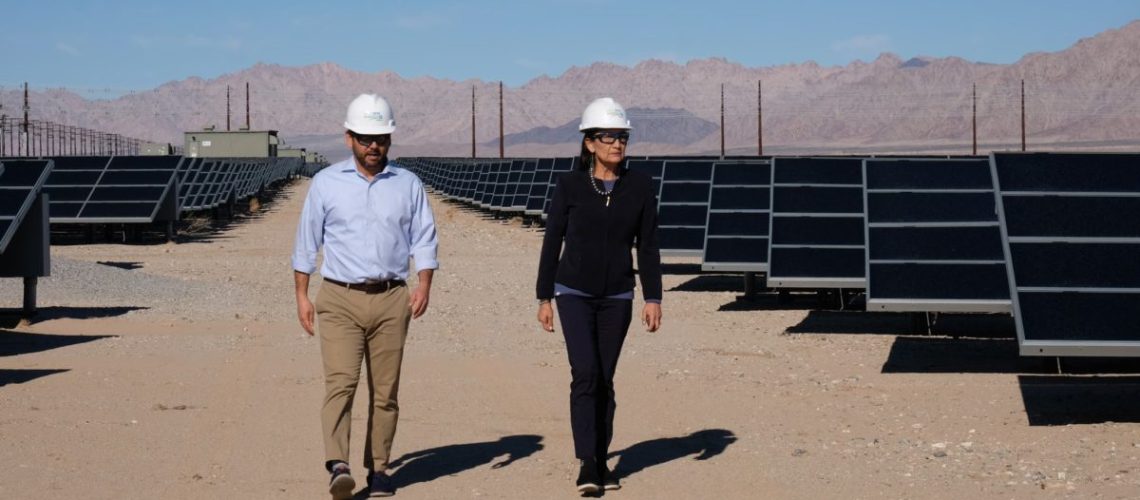Once complete, the projects would generate enough electricity to power roughly 2 million homes.
The U.S. Department of the Interior announced that the Bureau of Land Management (BLM) is advancing nine solar projects on public lands that would add over 6 GW of combined electric generation capacity to the grid. Together, the projects would generate enough electricity to power roughly 2 million U.S. homes.
The BLM manages over 245 million acres of public land mainly in 12 western states, including Alaska. To date, the BLM has permitted more than 25 GW of clean energy projects, enough to power about 12 million homes. This includes solar, wind, and geothermal projects as well as gen-tie lines on public lands that are essential for connecting clean energy generation projects on both federal and non-federal lands to the grid.
“As we continue to review clean energy projects, we are committed to collaborating with states, Tribes and stakeholders to ensure that we are building lasting opportunities to create jobs and stimulate the clean energy economy,” said BLM director Tracey Stone-Manning.
The latest round of BLM project advancements include the Esmerelda 7 solar project, among the largest solar projects in the world. Esmerelda 7 is a set of seven proposed utility-scale solar facilities with battery energy storage systems near Tonopah, Nevada. The projects are proposed to be developed on 118,000 acres of BLM managed land.
BLM is now opening a 45-day public comment period on the draft environmental impact statement and resource management plan for Esmerelda 7. The environmental impact statement will provide the foundation for individual environmental analyses of each project, after which the BLM will decide whether to grant rights-of-way for some or all of the projects.
If all Esmerelda 7 projects are approved, the portfolio would add 5.35 GW of electricity, or enough to power about 1.6 million homes.
Along with the BLM-supported Esmerelda 7 is the Libra Solar project, a 700 MW solar and 700 MW battery energy storage project with a 24-mile generation tie-line, planned for development in Mineral and Lyon Counties in Nevada.
The BLM is also opening a 30-day public comment period for the Elisabeth Solar Project near Dateland, Arizona. The project would add 270 MW of solar and 300 MW of battery energy storage.
“With today’s advancement of nine solar energy projects on public lands, we are taking a significant step towards these efforts and President Biden’s ambitious clean energy goals,” said principal deputy assistant secretary for Land and Minerals management, Dr. Steve Feldgus.
As of July 2024, an additional 70 utility-scale clean energy projects are in process by the BLM throughout the Western United States. These projects have the potential to produce almost 32 GW of renewable energy. In addition, BLM has begun the preliminary review of approximately 166 applications for solar and wind development, as well as more than 40 applications for solar and wind energy site testing.
The Biden-Harris administration has set a goal to achieve a carbon pollution free power sector by 2035.



